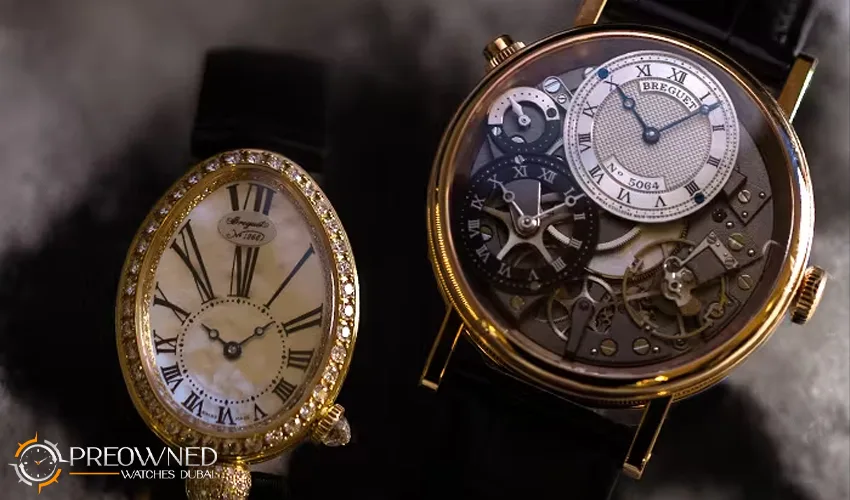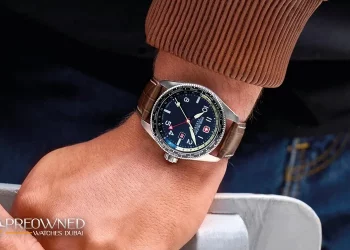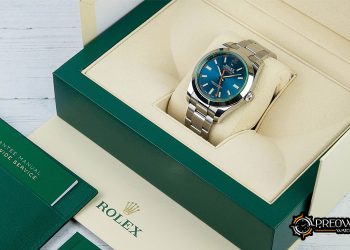Timekeeping has been an integral part of human civilization for centuries. From ancient sundials to intricate pocket watches, the measurement of time has undergone a remarkable evolution. However, it was not until the late 19th century that a new chapter in horology began with the invention of the world’s oldest wristwatch. This revolutionary timepiece forever changed the way people carried and accessed time, marking the beginning of a new era.
Understanding the Evolution of the Wristwatch
In this article, we delve into the fascinating history of the oldest wristwatch in the world, tracing its origins and exploring its impact on the world of horology. While there are different accounts as to which was the first wristwatch, it is widely agreed that the oldest wristwatch was made by Abraham-Louis Breguet for the Queen of Naples in 1810. Here are some of the important points we will be talking about in the article:
- Origin of the Wristwatch
- Pioneering Innovators
- World War I and the Wristwatch Revolution
- Technological Advancements
Origins of the Wristwatch
The genesis of the wristwatch can be attributed to the practical needs of soldiers during the late 19th century. It was during the Boer War (1899-1902) that officers realized the inconvenience of relying on pocket watches, which were impractical to access in the heat of battle. Enterprising soldiers began to experiment by adapting pocket watches to be worn on the wrist using leather straps. This ingenious solution offered easy accessibility and freed up the hands for combat, leading to the birth of the wristwatch.
Pioneering Innovators
While Abraham-Louis Breguet is credited with the manufacturing of the oldest wristwatch, Patek Philippe is another watchmaker known for creating one of the first wristwatches. It is interesting to note that Patek has also been mentioned in the Guinness World Records as the first manufacturer of a wristwatch. A watch that was made in 1868 for Countess Koscowicz of Hungary.
Among the pioneers in the development of the wristwatch was Louis Cartier, a renowned French jeweler. In 1904, Cartier introduced a timepiece known as the Santos-Dumont, named after the aviation pioneer Alberto Santos-Dumont. This groundbreaking wristwatch featured a square-shaped case, a leather strap, and a crown for adjusting the time. It became an instant hit and set the stage for the wristwatch’s rise in popularity.
In parallel, the Swiss watch industry also played a significant role in the evolution of the wristwatch. Brands such as Omega, Longines, and Patek Philippe began producing wristwatches with precision movements and exquisite designs, capturing the attention of watch enthusiasts worldwide.
World War I and the Wristwatch Revolution
The outbreak of World War I in 1914 further accelerated the popularity of wristwatches. Soldiers on the front lines found wristwatches indispensable for coordinating attacks, synchronizing maneuvers, and timing artillery barrages. The practicality of wristwatches over pocket watches was evident, as they provided soldiers with instant access to time during chaotic and life-threatening situations.
Furthermore, the war witnessed a surge in demand for wristwatches among women. Traditional pocket watches were impractical for the active roles women undertook during the war, and wristwatches became a symbol of liberation and empowerment. This shift in fashion and functionality propelled the wristwatch into the mainstream, forever changing the landscape of timekeeping.
Technological Advancements
The wristwatch continued to evolve throughout the 20th century, driven by remarkable technological advancements. The introduction of self-winding mechanisms, waterproof casings, and chronograph functions further enhanced the functionality and desirability of wristwatches. These developments paved the way for the wristwatch’s transformation from a mere timekeeping device to a symbol of status, craftsmanship, and personal expression.
Today, wristwatches come in different designs and can be easily purchased from your nearest stores. You can also sell pre owned watches in Dubai and other cities with popular watch markets. From the oldest wristwatch to the newest innovation, horology has come a long way.
The Oldest Wristwatch in the World
The oldest wristwatch in the world emerged from the ingenuity of soldiers and the creative minds of pioneering watchmakers. From its humble beginnings on the battlefield to its widespread adoption in society, the wristwatch became an essential accessory that blended fashion, functionality, and precision. Its journey mirrors the relentless human pursuit of innovation and the desire to conquer time. Today, wristwatches remain a timeless testament to our fascination with capturing and treasuring the moments that shape our lives.













